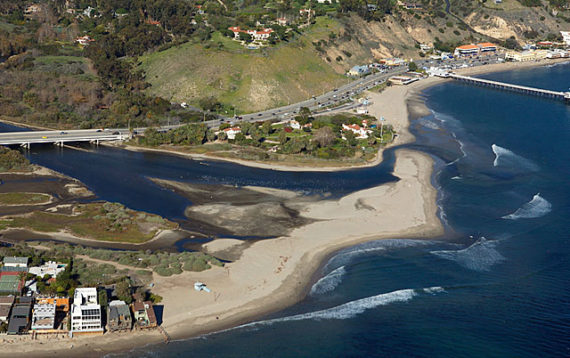Location: Los Angeles County
Project Type: Restoration
Status: Completed
Habitat Type: Tidal Wetland
Date Completed: 2005
Cost: $1,925,000
Assembly District: 50
Senate District: 27
Congressional District: 33
Project Lead/Grantee:
California Department of Parks and Recreation (Suzanne Goode, 818-880-0364)
 For more information, visit scwrp.org
For more information, visit scwrp.org
This project relocated and redesigned public parking and staging areas to maximize habitat restoration area in Phase 2 and improve water quality.
Significant impairments currently exist at the lagoon primarily due to uncontrolled inflow of water from outside of its boundaries contributing pollutants and nutrients to the system, and poor circulation within its boundaries. The water management plan outlines restoration measures intended to control local outside inputs, such as storm drainage from the parking lot and irrigation from perimeter areas, as well as promote circulation of water within the lagoon. Storm drainage is to be managed by increasing percolation and drainage away from the lagoon.
Measures include sloping the parking lot away from the lagoon to drain toward Pacific Coast Highway, using permeable pavement at the parking lot and entrance roads and vegetated swales along the parking lot perimeter. It may also be possible to divert and treat runoff by connecting to the City of Malibu storm drain force main to be installed in the near future. Circulation will be enhanced by reconfiguring the west lagoon to promote maximum tidal circulation during open conditions and maximize wind driven circulation during closed conditions. Circulation will be assessed by continuously monitoring and evaluating water movement within the lagoon to identify needed adaptive management improvements. Open and closed lagoon conditions are addressed, and the use of continuously monitoring gauges is specified. The plan includes performance criteria and adaptive management options so the plan can be revised if needed to ensure long-term restoration integrity and success. Malibu Lagoon also experiences degraded habitat and invasion by non-native species due to anthropogenic disturbance and encroachment on the sensitive ecosystem of plants and animals.
A Habitat Plan is provided specifying implementation practices and maintenance requirements for enhancement and management of the restored ecosystem. The plan defines vegetative communities that will be established and/or enhanced as part of the restoration process. Details are provided for slopes and drainage, topsoil salvage and management, planting and establishment, and maintenance for short- and long-term conditions. The plan utilizes an adaptive management framework to ensure long-term restoration integrity and success.

